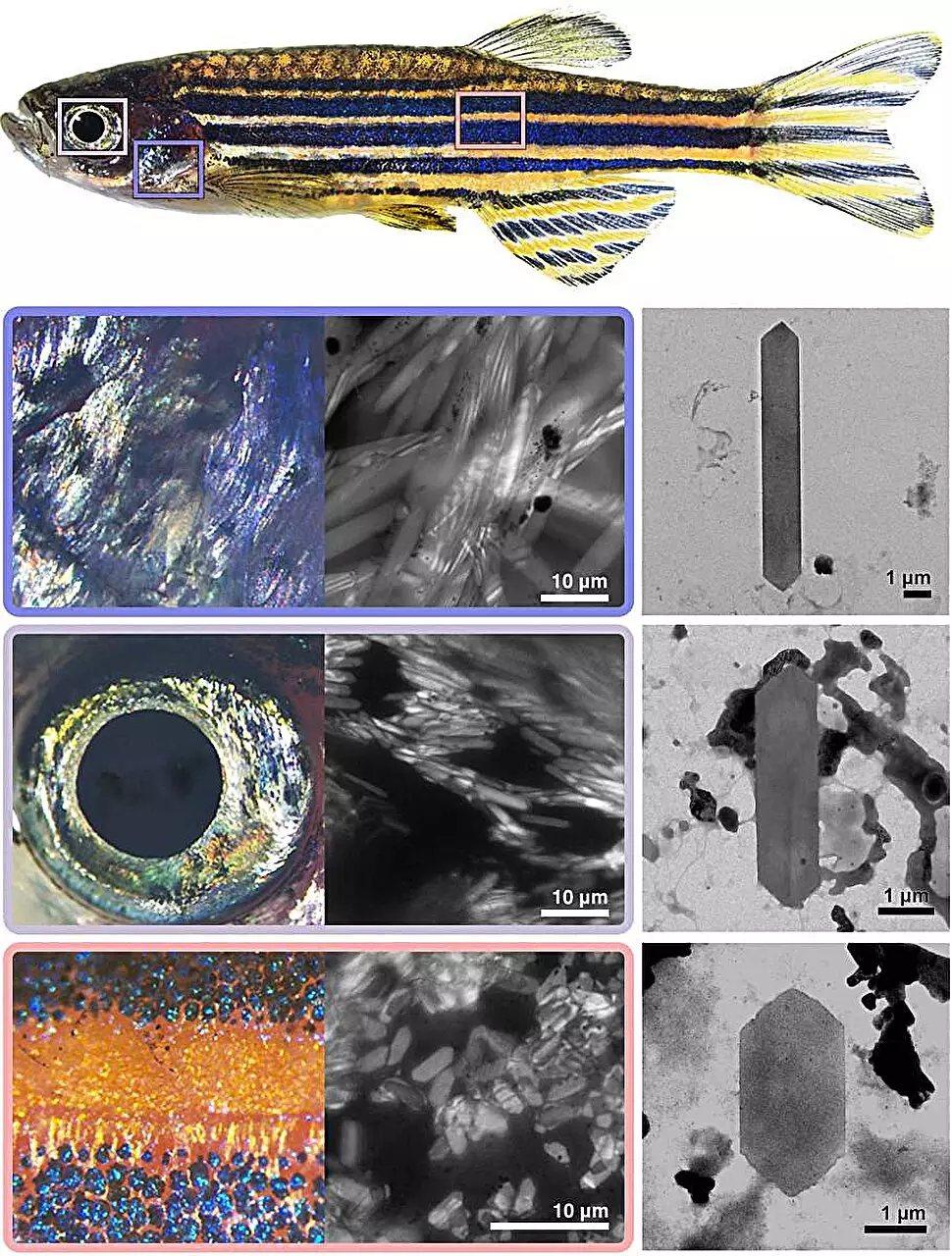What unites the worlds of animals as diverse as fish and insects, as well as chemically inclined figures like Walter White from “Breaking Bad”? The intriguing process of crystal formation. While Walter White’s crystalline creations serve illicit purposes, the crystals crafted by living organisms play vital roles in their survival, from facilitating vision and communication to aiding in camouflage and temperature regulation. Understanding how these organisms produce such varied crystals from a mere two molecular components—guanine and hypoxanthine—has remained a riveting puzzle for scientists. Recent research led by the Weizmann Institute of Science has begun to unravel this enigma, focusing mainly on the fascinating zebrafish as a model organism.
The Crystalline Wonders of Zebrafish
Zebrafish stand out in the animal kingdom not just for their vibrant appearance, but for the remarkable variety of crystals that can be observed in their tissues. With one glance, it becomes apparent that different parts of their bodies are adorned with crystals exhibiting distinct shapes and colors. The gills gleam with a silvery hue, while the eyes take on bluish reflections, and the skin cells demonstrate a dazzling array of yellow and blue shades. This diversity in coloration and structure has piqued the interest of researchers, prompting a deeper exploration into the biological underpinnings that yield such a remarkable variety.
Dr. Dvir Gur and his team meticulously dissected the different crystals present in zebrafish, making use of advanced imaging techniques like electron microscopy. In their analyses, they noted a significant difference in the shape and arrangement of crystals depending on where they were located within the fish’s body. Long, slender crystals populated the gills, while shorter and more compact formations were found in the eyes. This observation sparked deeper questions about the biochemical processes that govern crystal formation within the zebrafish.
The research took an intriguing turn when it examined the balance of guanine and hypoxanthine, the two core components responsible for forming these crystals. The team’s findings drew a fascinating parallel to the art of baking: just as a baker can adjust quantities of cream and chocolate to craft various confections, the ratio of guanine to hypoxanthine in zebrafish crystals alters their structure and functionality. This concept hints at a layer of complexity in the crystal formation process that resembles culinary creation, thus making molecular Biology more relatable.
Investigating this idea further, the scientists successfully synthesized various forms of zebrafish crystals in the lab by modulating the ratios of the two molecular building blocks. It became clear that these ratios play a pivotal role not only in determining crystal architecture but also in their optical properties. Each variation produces a crystal uniquely suited to its function within the organism, whether it be for reflecting light or acting as a protective element.
Decoding Iridophores: The Crystal Factories
Delving deeper into the very cells responsible for crystal production, known as iridophores, the research team aimed to understand the enzymatic landscape that enabled these cells to create distinct crystals. The findings revealed a complex interplay of enzymes within iridophores, showcasing both an abundance of enzymes crucial for assembling the building blocks and a surprising scarcity of other enzymes believed to serve similar functions. This intriguing biochemical balance led researchers to propose that each iridophore group has a unique signature of enzymatic activity, explaining why distinct crystals emerge from different tissues.
Further exploring this hypothesis, the researchers conducted experiments by modifying the genetic expression of a key enzyme involved in guanine production. By engineering zebrafish that could not express this enzyme, they noted a transformative change in crystal structure—showing that the delicate equilibrium of enzymes is essential for maintaining the integrity and function of the crystals across different anatomical sites.
The outcomes of this comprehensive study underscore the brilliance of nature’s design: a simple combination of two molecules can yield a stunning variety of shapes, colors, and functionalities. This discovery bears implications beyond the zebrafish; it provides insights that could inspire synthetic material creation in fields ranging from optics to biomaterials.
As interdisciplinary collaboration continues to drive innovation, the revelations gained from studying zebrafish may teach humanity to replicate these natural processes, advancing both science and technology hand in hand. This research not only elevates our understanding of biological systems but also serves as a reminder of the elegance found in nature’s simplicity, whereby complex functionalities arise from the interaction of a few basic components.


Leave a Reply